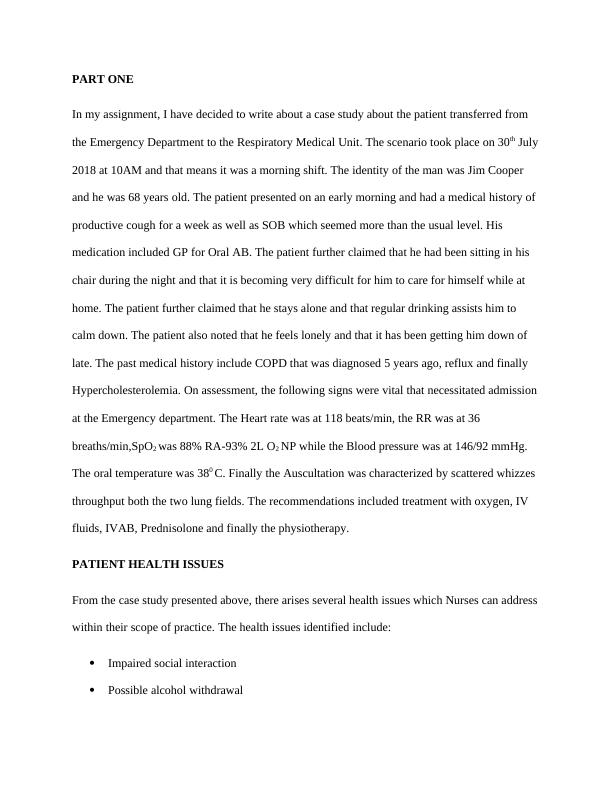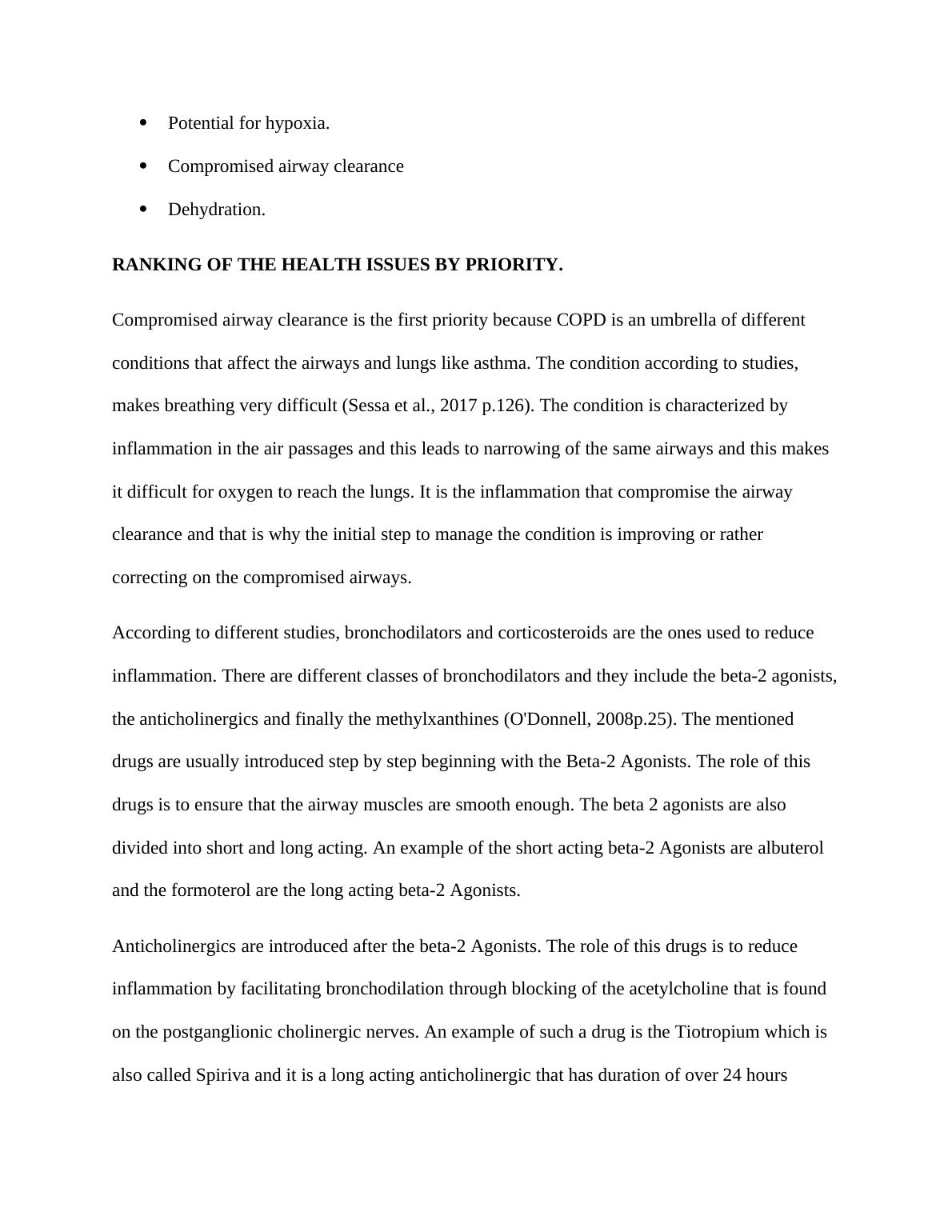Integrated Nursing Practice Assignment
Added on 2020-05-28
8 Pages2072 Words106 Views
INTEGRATED NURSING PRACTICENAME:INSTITUTION:TUTOR:DATE:

PART ONEIn my assignment, I have decided to write about a case study about the patient transferred from the Emergency Department to the Respiratory Medical Unit. The scenario took place on 30th July2018 at 10AM and that means it was a morning shift. The identity of the man was Jim Cooper and he was 68 years old. The patient presented on an early morning and had a medical history of productive cough for a week as well as SOB which seemed more than the usual level. His medication included GP for Oral AB. The patient further claimed that he had been sitting in his chair during the night and that it is becoming very difficult for him to care for himself while at home. The patient further claimed that he stays alone and that regular drinking assists him to calm down. The patient also noted that he feels lonely and that it has been getting him down of late. The past medical history include COPD that was diagnosed 5 years ago, reflux and finally Hypercholesterolemia. On assessment, the following signs were vital that necessitated admissionat the Emergency department. The Heart rate was at 118 beats/min, the RR was at 36 breaths/min,SpO2 was 88% RA-93% 2L O2 NP while the Blood pressure was at 146/92 mmHg. The oral temperature was 380 C. Finally the Auscultation was characterized by scattered whizzes throughput both the two lung fields. The recommendations included treatment with oxygen, IV fluids, IVAB, Prednisolone and finally the physiotherapy.PATIENT HEALTH ISSUESFrom the case study presented above, there arises several health issues which Nurses can addresswithin their scope of practice. The health issues identified include:Impaired social interactionPossible alcohol withdrawal

Potential for hypoxia.Compromised airway clearanceDehydration.RANKING OF THE HEALTH ISSUES BY PRIORITY.Compromised airway clearance is the first priority because COPD is an umbrella of different conditions that affect the airways and lungs like asthma. The condition according to studies, makes breathing very difficult (Sessa et al., 2017 p.126). The condition is characterized by inflammation in the air passages and this leads to narrowing of the same airways and this makes it difficult for oxygen to reach the lungs. It is the inflammation that compromise the airway clearance and that is why the initial step to manage the condition is improving or rather correcting on the compromised airways.According to different studies, bronchodilators and corticosteroids are the ones used to reduce inflammation. There are different classes of bronchodilators and they include the beta-2 agonists,the anticholinergics and finally the methylxanthines (O'Donnell, 2008p.25). The mentioned drugs are usually introduced step by step beginning with the Beta-2 Agonists. The role of this drugs is to ensure that the airway muscles are smooth enough. The beta 2 agonists are also divided into short and long acting. An example of the short acting beta-2 Agonists are albuterol and the formoterol are the long acting beta-2 Agonists.Anticholinergics are introduced after the beta-2 Agonists. The role of this drugs is to reduce inflammation by facilitating bronchodilation through blocking of the acetylcholine that is found on the postganglionic cholinergic nerves. An example of such a drug is the Tiotropium which is also called Spiriva and it is a long acting anticholinergic that has duration of over 24 hours

End of preview
Want to access all the pages? Upload your documents or become a member.
Related Documents
Pharmacological Management of COPD and Viral Infectionslg...
|6
|1216
|85
Pharmacological Management of COPD and Viral Infectionslg...
|6
|1216
|152
Oxygen therapy in the pulmonary artery to lower the hypoxic condition in the pulmonary arterylg...
|1
|646
|260
PCAL Workshop for 401210: Health Variations 3lg...
|11
|2819
|439
Palliative Care: Strategies for COPD Patientslg...
|7
|1829
|101
Bacterial Pneumonia Assignment Reportlg...
|8
|2283
|15